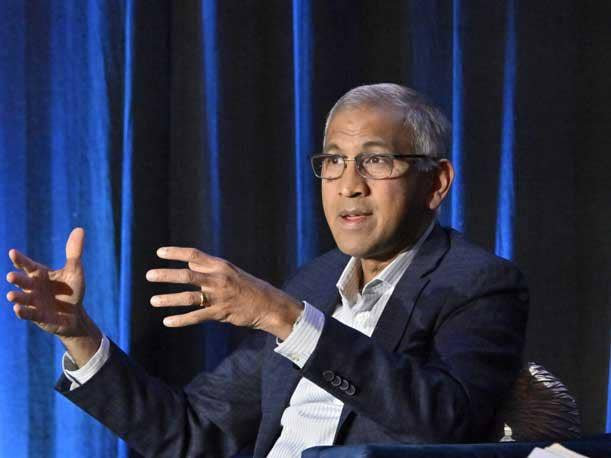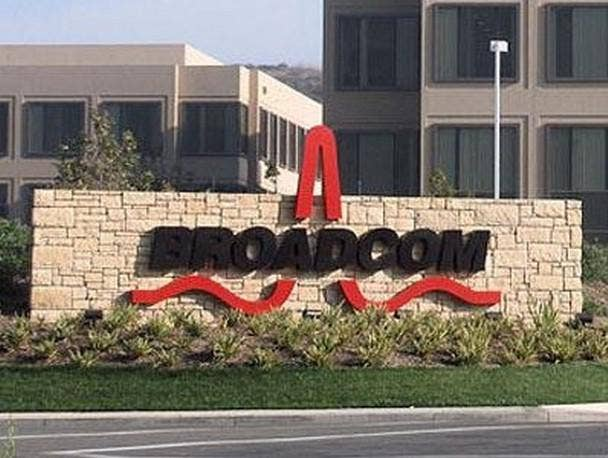Nutanix CEO Says Partner Opportunity For GenAI Lies On-Prem, Edge
'A lot of the initial focus of AI was on public cloud, training these large language models. But when it comes to real applications, they’re going to be deployed where the data is and a lot of data is on-prem, it’s at the edge,' Nutanix CEO Rajiv Ramaswami tells CRN.

For partners who want to find their organization’s share of the generative AI market, Nutanix CEO Rajiv Ramaswami is telling them to follow the data.
“A lot of the initial focus of AI was on public cloud, training these large language models. But when it comes to real applications, they’re going to be deployed where the data is and a lot of data is on-prem, it’s at the edge,” Ramaswami told CRN. “Also, it’s about inferencing. It’s not just the training. It’s training, then there’s fine-tuning, then there’s inferencing. Those last two steps are likely going to be done more on-prem and at the edge, which is an opportunity for companies like us and partners.”
[RELATED: Broadcom’s ‘Driving Force’ CEO Hock Tan Gets A $161.8M Fill-Up]
During the San Jose, Calif.-based hyperconverged infrastructure provider’s most recent earnings call, Ramaswami said Nutanix notched more wins for its GPT-in-a-box product. He said Nutanix partner incentives around new customers also apply to the generative AI solution.
“What I hear from our channel partners is that the new incentives we have added in terms of the new logos, they’re up there, in terms of reward structure,” he said. “We have a new logo incentive for partners. That depends on where they are in their level of certification with us. What kind of partner they are. The more certifications they have the more discounts they get. That’s on top of deal registration incentives already. The total stack of rewards is quite compelling.”
Ramaswami said in addition to the tailwinds provided by generative AI, Nutanix stands to see a multi-year benefit from VMware’s merger with Broadcom which is driving customers to look at alternatives in the wake of price hikes, as well as the company’s suite of cloud infrastructure products.
Nutanix’s second-quarter revenue soared 16 percent year over year and the company raised all of its guidance for the remaining two quarters as rival VMware churns through its opening months under Broadcom ownership. After Nutanix earnings last week, Ramaswami talked to media about the company’s performance and the road ahead.
In terms of GenAI we’ve been hearing for about a year now that this transformation is coming. During the call you talked about some of Nutanix wins around its GPT-in-a-box. Is there going to be some steak to come with the sizzle that we’ve been hearing about around generative AI?
I think with all new technologies there is a period where there is a hype cycle and then there is a period where there is a retrenchment and then steady growth. I’ve been through a few of these cycles in my career. I started out in optical networking which went through that cycle in the 90s and then peaked with the internet bubble and came down, then after that steady growth.
We are seeing that today with electric cars. There was a lot of hype. This is going to be the future. Companies like GM bet their future on it and they’re seeing that people are not quite ready to embrace it yet. The charging stations aren’t there. People have slowed down a little bit.
AI is going through the same piece. Where there has been a lot of funding that went into companies. A lot of excitement about what’s possible. I am excited about what is possible.
Then I think if I’m a business, I’m going to have to look at this like, What’s my ROI? What’s my TCO? I’m going to invest in this capability, maybe it’s to help my customer service, maybe it’s to make my developers more productive. And we are looking at all of that internally, but it has to be solidly justified.
My investment here has to be tying to better returns, and so they’re going to go through an adjustment period. Now I have to get real. Is the data I’m getting out of this reliable? Can I trust it? Do I need to verify it before I use it?
We are going through that cycle.
For most of our customers at least, it’s early days. They’re experimenting with things.

Where or when do you see an opportunity for Nutanix channel partners around Generative AI?
A lot of the initial focus of AI was on public cloud, training these large language models. But when it comes to real applications, they’re going to be deployed where the data is and a lot of data is on-prem, it’s at the edge.
Also, it’s about inferencing. It’s not just the training. It’s training, then there’s fine-tuning, then there’s inferencing. Those last two steps are likely going to be done more on-prem and at the edge, which is an opportunity for companies like us and partners.
Our GPT in a Box is really the same as our infrastructure platform. All the incentives that we have to bring on new customers. This is a period of learning when it comes to GPT and GenAI. Learning for us, learning for our customers.
What I hear from our channel partners is that the new incentives we have added in terms of the new logos, they’re up there, in terms of reward structure. We have a new logo incentive for partners. That depends on where they are in their level of certification with us. What kind of partner they are. The more certifications they have the more discounts they get. That’s on top of deal registration incentives already.
The total stack of rewards is quite compelling.

On GenAI, are there applications that your engineers are developing internally that have you excited?
Absolutely. These are the same application that all of our customers are thinking through too. The first one I would say are copilots. We have a lot of developers. I want to have them be more productive so co piloting is an important part of it, automating that. Providing assistive capabilities to quickly address issues that come up and root cause problems.
The third use case actually is using it on top of our products to automate and understand more about what’s going on, for example, in operations management, when we are managing a customer environment with our product, clearly being able to apply AI on the backend to understand and optimize what is going on in the customer environment.
Those are some of the things we are doing with GenAI. Also, our customers are looking to do the same with theirs.

What can you tell us about the VMware defections and how Broadcom’s moves have played with Nutanix market?
There’s no doubt, all the actions of Broadcom have created a significant, multi-year opportunity for us to win new customers, to gain market share. The timing of these things and the magnitude is a bit unpredictable.
We have a substantial pipeline of opportunities. There are three factors to consider in terms of how that translates into business for us. First is that many VMware customers signed multi-year terms, enterprise licensing agreements with VMware, just before their deal closed, knowing this would happen so they could buy themselves some time. Three to five year deal.
Second, when they convert from VMware to Nutanix, which by the way we believe we are the easiest, simplest alternative for customers considering a migration from VMware. There’s also typically an infrastructure modernization effort associated with that, where they go through their hardware depreciation cycles, whether it’s servers or storage or hardware and then modernize that infrastructure. So, the timing is not just a software purchase from us but it’s also when are they ready to modernize?
The last bit is typically, when they first bring us into an environment they’ll give us a small initial deal and then we’ll expand over time. So land and expand opportunity for us. Make no mistake it’s a significant multi-year opportunity for us to gain customers and share.

How much do you expect your partner program grow as a result of VMware’s merger with Broadcom?
Clearly Broadcom has made a number of changes to the partner network. They cancelled the VMware program, they’re bringing their own program in, I think they’re more restrictive in terms of how many partners will be part of it. Then there’s the managed service provider side of the partners also, the same thing is happening too.
Also, I should say, Broadcom has taken their top 2,000 accounts direct. So partners are no longer going to be part of that equation from what I understand. Generally, I think it means, partners want to do more with us. And more partners want to come work with us. We have been on the journey ourselves as a company, growing our partner base, enabling them, training them, and that continues.
This is a good outcome for us. We are working very closely with our channel partners, to bring more of them into the fold. Enable them, train them. We have also provided some additional incentives for channel partners to reward channel partners for brining new customers over to us.